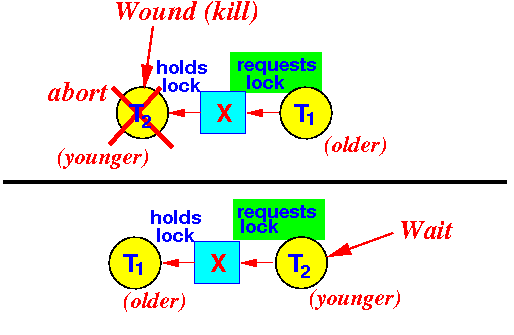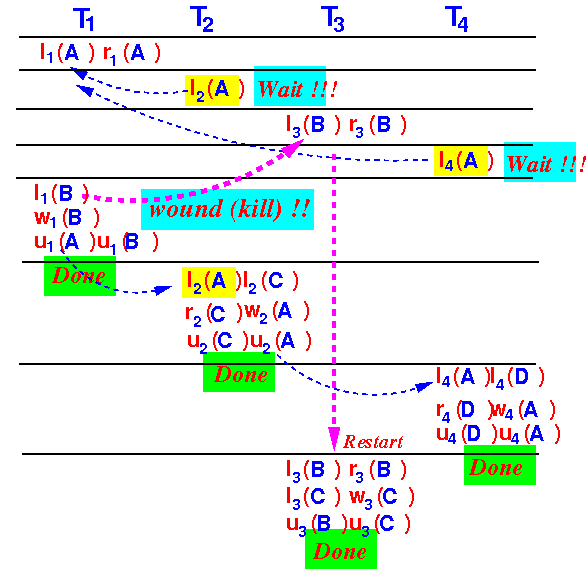- Timestamped transactions:
- Each transaction is
assigned a
unique
increasing timestamp:
- T1, T2, T3, ...
- Earlier transactions receives a smaller timestamp
- Each transaction is
assigned a
unique
increasing timestamp:
- Purpose of
the time stamp:
- To give older transactions (= transactions with smaller timestamps) a higher priority
- The
Wound(kill)-wait
locking rule:
- When an
older transaction
tries to lock a DB element
that
has been locked by
a younger transaction:
- The older transaction will wound (= kill/abort) the younger transaction
- When a
younger transaction
tries to lock a DB element
that
has been locked by
a older transaction:
- The younger transaction wait until the lock is released (by the older transaction)
Graphically:

- When an
older transaction
tries to lock a DB element
that
has been locked by
a younger transaction:
- The wound-wait
rule will
prevent (forbid) the
development of
deadlock because:
- T1 will
wound (= kill/abort) the
(younger)
Tn:

(The wait direction in wound-wait is opposite from a wait-die locking rule !!!)
- T1 will
wound (= kill/abort) the
(younger)
Tn:
- Note:
- In both schemes
(wait-die and
wound-wait), the
younger transaction will
get
aborted
- The older transaction is not be aborted !!!
- In both schemes
(wait-die and
wound-wait), the
younger transaction will
get
aborted
- Transactions:

- Example execution
that obeys the
wound-wait rule:

- Note:
- When a transaction is aborted and restarts, the transaction will retain its transaction timestamp !!!